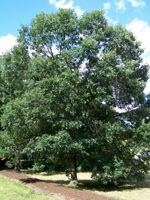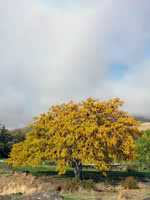Mon-Fri 9am - 5pm Mountain time
Thornless Honeylocust vs Swamp White Oak
Quercus bicolor
Gleditsia triacanthos inermis
NOT AVAILABLE THIS SEASON - MIGHT RETURN
The Swamp White Oak is a medium-sized deciduous tree native to North America. It is commonly found in swamps, lowlands, floodplains, and near streams and lakes. The leaves are two-toned, green on top and silvery-white on the undersides, adding to the visual appeal of this popular shade tree.
In the fall, the Swamp White Oak produces acorns which are an important food source for wildlife. It also provides a habitat for the larvae of many butterfly and moth species, playing an important ecological role. Although its growth is slow in the first few years, once the roots are established, it can achieve faster annual growth.
Thornless Honey Locust makes an excellent shade tree with its lacy foliage and dappled shade. The leaves are honey-yellow, light and airy, providing interesting color and texture to your landscape. This variety is thornless, and the seeds and pods provide food for wildlife such as deer and squirrels.
The Thornless Honey Locust is tolerant of drought, various soil conditions, and even road salt.
Swamp White Oak Quick Facts
Thornless Honeylocust Quick Facts
Toxicity: mildly toxic to humans, cats, and dogs

